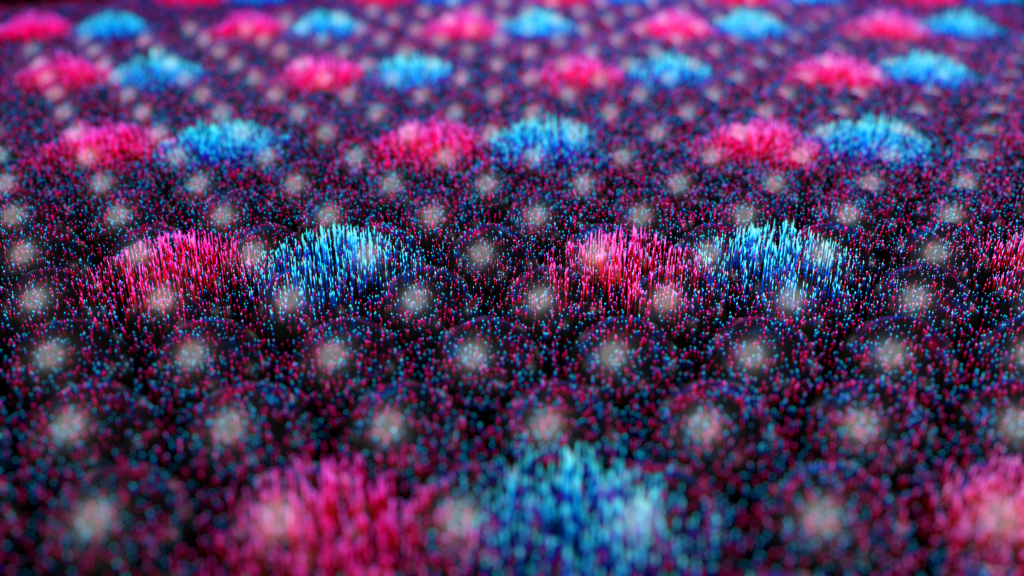
The charge density wave order is a fascinating electronic phase that appears in some metallic crystals below a critical temperature. It combines a periodic distortion of the atomic lattice and a redistribution of the electronic charge to a standing-wave arrangement. These modulations form new periodicities that modify the symmetries of the host material, with important consequences on its overall electronic structure, but researchers have so far only focused on the impact on the most energetic electrons.
By combining scanning tunneling microscopy (STM) imaging with a simple theoretical model, Prof. Christoph Renner’s team at the University of Geneva demonstrates that the transition to a charge density wave phase in 2H-NbSe2 simultaneously affects electrons in different electronic bands, not only the most energetic ones, but also those associated with low-energy electrons. These different electrons form spatially shifted standing-waves, a shift that produces unique patterns in the STM images. It is the analysis of these patterns that has allowed these researchers to highlight the multiband nature of the charge density wave, essentially ignored until now. The fact that multiple modulations can form in response to a new periodicity from a primary phase transition is very general. The results published in Nature Communications open new perspectives for the general understanding of periodic electronic phases and their interactions with other electronic phases, in particular with superconductivity.